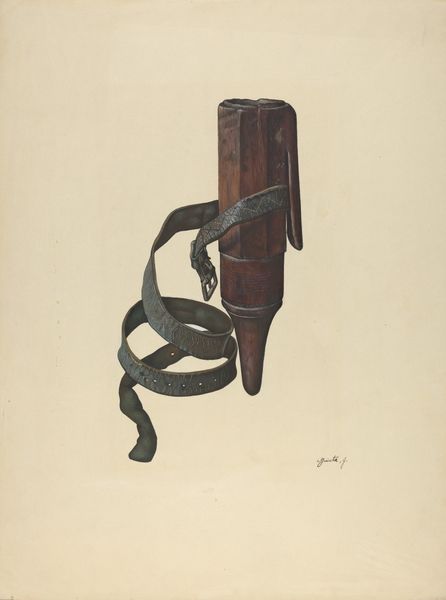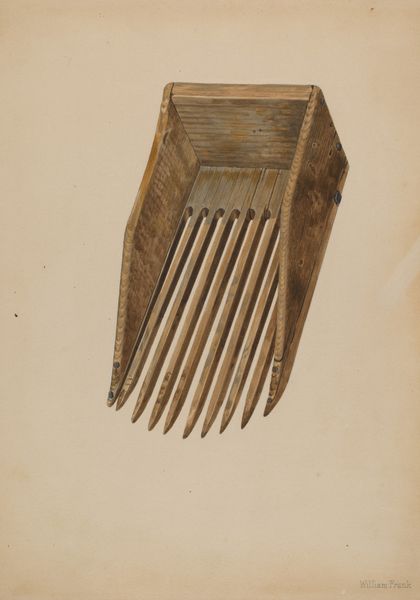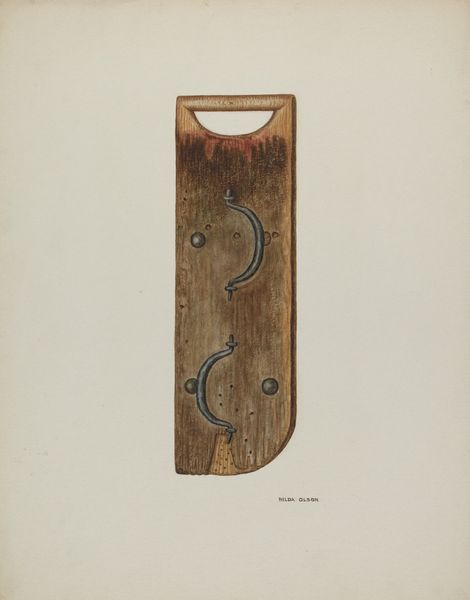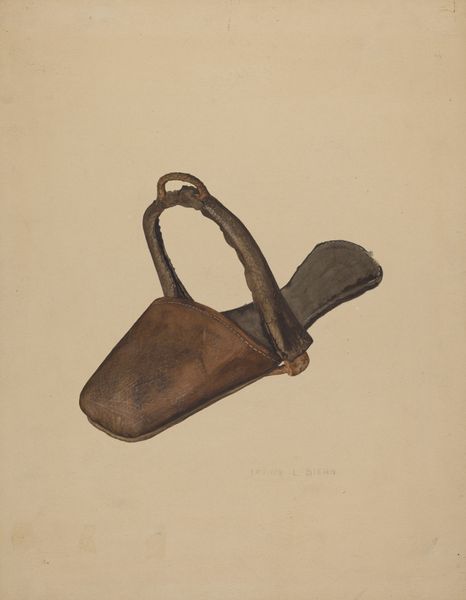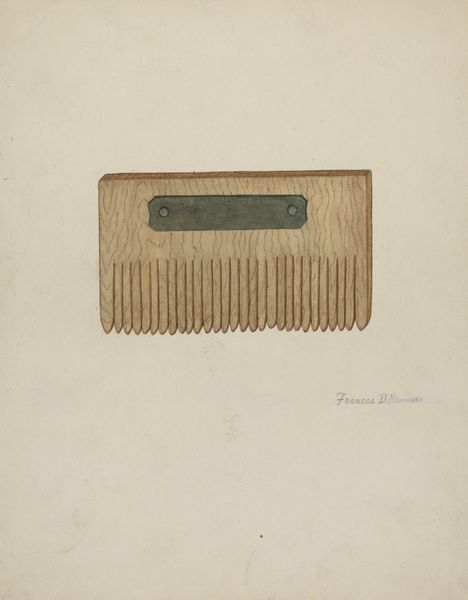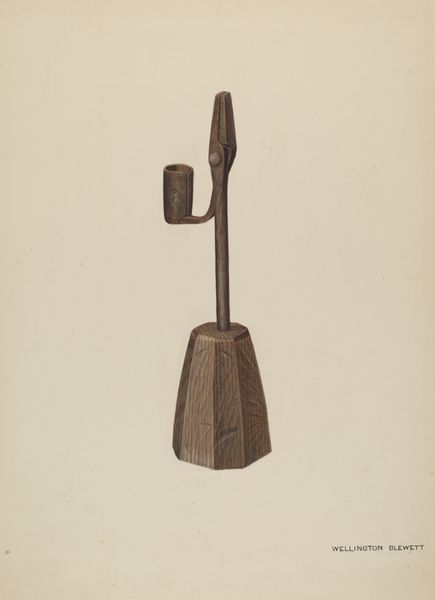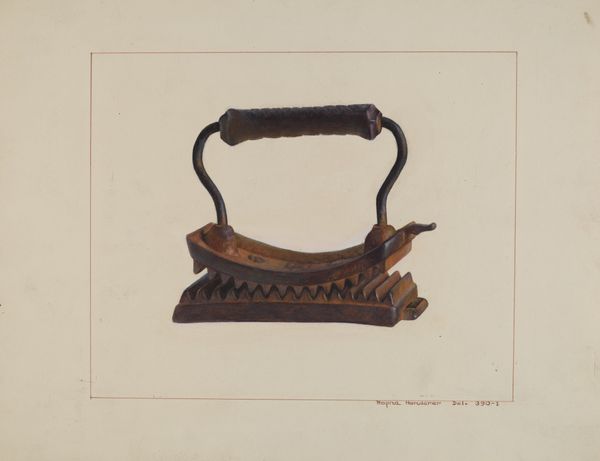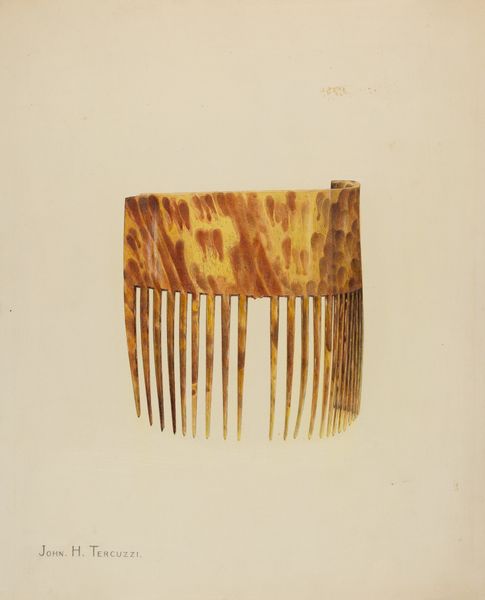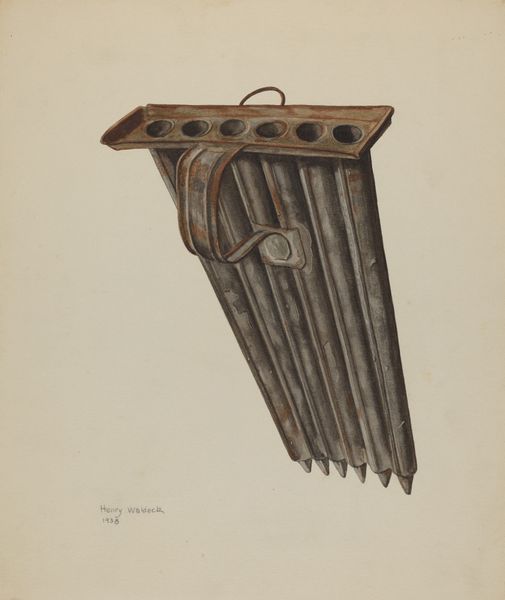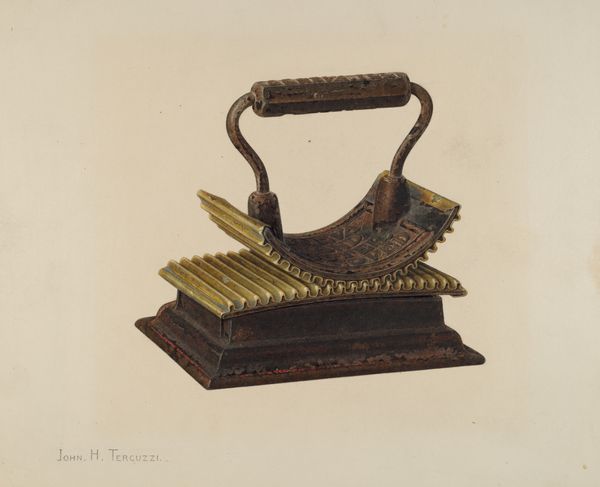
drawing, coloured-pencil, wood
#
drawing
#
coloured-pencil
#
pencil drawing
#
wood
Dimensions: overall: 37 x 29.6 cm (14 9/16 x 11 5/8 in.) Original IAD Object: 4 1/2" long; 6" high
Copyright: National Gallery of Art: CC0 1.0
Editor: This is H. Langden Brown’s "Comb (For Horses' Manes and Tails)," circa 1938. It’s a colored-pencil and wood drawing. The composition, with its stark simplicity, almost makes me consider this ordinary object in an abstract context, devoid of utility. What do you see in this piece from a formalist point of view? Curator: The deliberate rendering of form immediately strikes me. Observe how the artist utilizes coloured-pencil to meticulously capture the grain of the wood. The rhythmic repetition of the comb's teeth creates a captivating visual cadence, wouldn’t you agree? It’s less about function and more about exploring the relationships between line, shape, and texture. Editor: I see that now, especially with how the empty spaces between the teeth add to this rhythm you're pointing out. Are there any other aspects of its composition that are noteworthy? Curator: Certainly. Consider the crest of the comb—its curvilinear design contrasts against the rigid, linear elements below. This tension engages the eye, forcing it to reconcile opposing forces. It avoids pure functionality, transforming a utilitarian object into an aesthetic study. What thoughts does that provoke? Editor: That contrast makes me think of the blending of artistry and function. Thanks to this perspective, I’m thinking about the aesthetic impact of functional objects. Curator: Exactly! Examining the work devoid of exterior knowledge enables us to assess its basic properties. It reminds us to not take simple forms for granted.
Comments
No comments
Be the first to comment and join the conversation on the ultimate creative platform.
